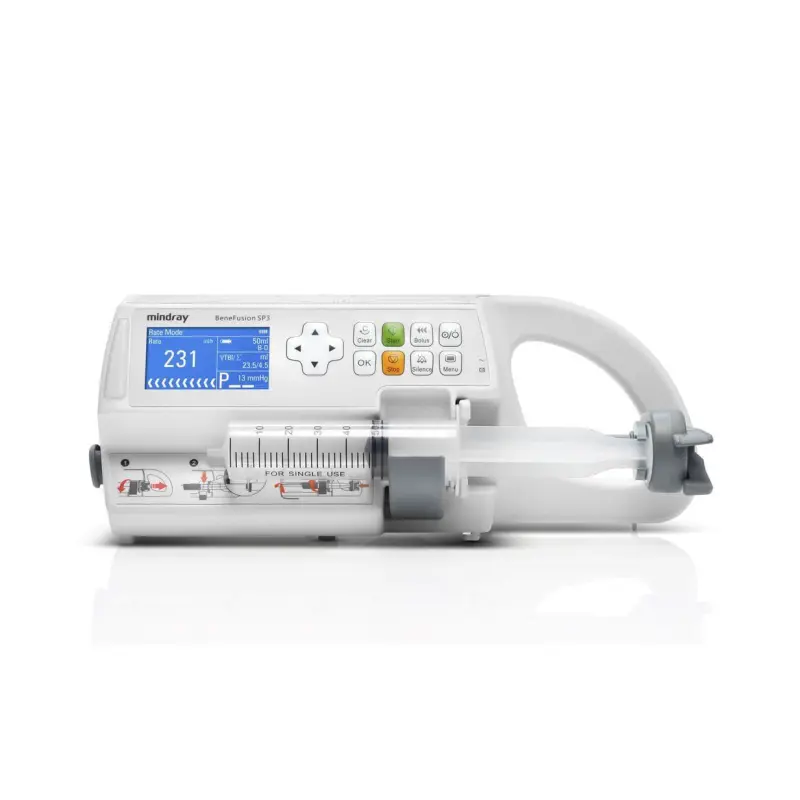Description
Key Features
- Precision Delivery:
- Flow rate range: 0.1–1,200 mL/hr (varies by model).
- Accuracy: ±2–5% (depends on syringe size and calibration).
- Syringe Compatibility:
- Supports syringes from 1 mL to 60 mL (e.g., BD, Terumo, Nipro).
- Infusion Modes:
- Continuous, intermittent, weight-based, and bolus dosing.
- Safety Alarms:
- Occlusion, air bubbles, syringe empty, low battery, and system errors.
- Battery Backup:
- Rechargeable lithium battery (4–8 hours runtime).
- LCD Display:
- Clear interface showing infusion rate, volume, and alerts.
Technical Specifications
- Dimensions: ~280 x 150 x 120 mm (compact for bedside use).
- Weight: ~3–4 kg (portable).
- Power Supply: 100–240V AC (global compatibility).
- Memory Function: Stores infusion history for review.
Applications
- Critical Care: Vasopressors, sedatives, insulin drips.
- Pediatric/Neonatal Care: Precise micro-dosing.
- Oncology: Chemotherapy drug delivery.
- Pain Management: Patient-controlled analgesia (PCA).
- Research: Controlled fluid delivery in lab experiments.
Safety Features
- Occlusion Detection: Stops infusion if blockage occurs.
- Anti-Freeflow Mechanism: Prevents uncontrolled fluid release.
- Password Protection: Restricts unauthorized settings changes.
- Auto-Purging: Removes air bubbles from tubing.
Setup and Operation
- Load Syringe: Secure syringe in the pump clamp.
- Prime Tubing: Remove air bubbles manually.
- Program Settings: Enter flow rate, volume, and mode.
- Start Infusion: Monitor for alarms or leaks.
Maintenance
- Daily: Wipe surfaces with disinfectant; check for syringe alignment.
- Monthly: Calibrate using manufacturer guidelines.
- Battery Care: Fully discharge/recharge monthly to prolong life.
Key Takeaways
The Syringe Pump is a practical choice for healthcare facilities seeking reliable, budget-friendly infusion technology. While it may lack some advanced features of premium brands, it performs well for routine clinical applications.

